A wedding proposal is one of the most significant moments in a couple’s life, and the ring you choose plays a central role in this beautiful milestone. The engagement ring is more than just a piece of jewelry—it’s a symbol of your commitment, love, and the promise of a future together. Whether you’re planning a romantic proposal or helping a friend find the right ring, understanding the options available will ensure you pick something truly meaningful.
In this guide, we’ll explore the types of engagement rings, popular styles, materials, and tips for choosing the perfect ring for your proposal. From classic diamond rings to modern, personalized options, there’s a wide variety to choose from. Let’s dive in!
1. Types of Engagement Rings: What’s the Right Fit?
When it comes to engagement rings, there are several different types, each with its own unique appeal. While diamond rings are the most traditional choice, there are plenty of other options for those looking to break with convention or choose something more personalized.
Diamond Rings: The Classic Choice
A diamond engagement ring is timeless and remains the most popular choice for a proposal. Diamonds are celebrated for their brilliance, clarity, and durability, making them the perfect symbol of eternal love. The tradition of proposing with a diamond ring was popularized by De Beers in the 1940s and has remained a symbol of luxury and commitment ever since.
- Popular Diamond Cuts: Round, princess, cushion, emerald, oval, and more.
- Setting Styles: Solitaire (single diamond), halo (a center stone surrounded by smaller diamonds), three-stone (representing the past, present, and future), and pave (diamonds set along the band).
Gemstone Rings: Adding a Personal Touch
If you’re looking for a non-diamond option, gemstone rings can be just as stunning and meaningful. Gemstones like sapphires, emeralds, and rubies offer beautiful alternatives with their own symbolic meanings.
- Sapphires: Symbolize loyalty and wisdom. They are also incredibly durable and often used in engagement rings (Princess Diana’s iconic blue sapphire ring is a perfect example).
- Emeralds: Represent growth, renewal, and fertility, making them a great choice for couples looking to start a new chapter in their lives.
- Rubies: Known for their passion and love, rubies add a fiery touch to engagement rings.
These colored stones also offer a way to create a more unique ring tailored to your partner’s personality and preferences.
Alternative Stones: For the Bold and Unique
For those who want something truly one-of-a-kind, consider alternative stones like moissanite, opals, or even black diamonds. Moissanite, for example, is a brilliant and ethical alternative to diamonds, and it’s more affordable while still offering remarkable sparkle. Opals and black diamonds, on the other hand, provide an edgier, more modern vibe.
- Moissanite: A lab-grown gemstone that’s similar to diamond in appearance but more affordable.
- Black Diamonds: Bold and unconventional, black diamonds have become increasingly popular for couples seeking something edgy and distinctive.
2. Ring Settings: Where the Magic Happens
Once you’ve decided on the type of stone, the next step is choosing the setting—the metal framework that holds the gemstone in place. The setting can affect the overall look and feel of the ring, and there are many options to suit different tastes.
Popular Engagement Ring Settings:
- Solitaire Setting: This is the most traditional style, where a single gemstone sits proudly on the band. It’s elegant, simple, and allows the stone to take center stage.
- Halo Setting: A smaller circle of diamonds (or other stones) surrounds the center stone, creating the illusion of a larger, more dazzling gem.
- Three-Stone Setting: Often referred to as the “past, present, future” setting, this design features a central stone flanked by two smaller stones, representing the journey of a relationship.
- Pave Setting: Diamonds or gemstones are set along the band, creating a sparkling effect that enhances the center stone.
- Bezel Setting: The stone is encircled by a metal rim, offering a more modern and secure design. This setting is great for active individuals who may be concerned about the stone getting damaged.
3. Choosing the Right Metal: What’s the Best Choice for Your Ring?
The metal of the ring band plays a crucial role in the ring’s overall aesthetic, durability, and feel. Here are some common metals used for engagement rings:
Platinum: Timeless and Durable
Platinum is often the metal of choice for high-end engagement rings due to its rarity, strength, and elegant white finish. It’s also hypoallergenic, making it a great choice for those with sensitive skin. Platinum is dense and durable, making it ideal for holding diamonds and other precious stones securely.
- Pros: Durable, hypoallergenic, premium look.
- Cons: More expensive than gold.
White Gold: Elegant with a Vintage Feel
White gold is a popular alternative to platinum, offering a similar aesthetic at a more affordable price. It’s made by alloying yellow gold with other metals like palladium or silver, and often coated with rhodium for a shiny, white finish.
- Pros: Affordable, stylish, versatile.
- Cons: Requires rhodium plating over time to maintain shine.
Yellow Gold: Traditional and Warm
Yellow gold is the most classic choice for engagement rings. It has a rich, warm tone that enhances the beauty of diamonds and gemstones. Over the years, yellow gold has seen a resurgence in popularity, especially for vintage-inspired designs.
- Pros: Timeless, classic, warm tones.
- Cons: May not be as durable as platinum or white gold.
Rose Gold: Romantic and Modern
Rose gold has become a popular choice for engagement rings due to its unique pinkish hue and romantic vibe. It’s created by alloying yellow gold with copper, resulting in a soft, feminine tone that’s perfect for those looking for something a little different.
- Pros: Romantic, modern, unique.
- Cons: Slightly less durable than platinum.
Alternative Metals: For a Personal Touch
For those looking for something unique or eco-friendly, alternative metals like titanium, tungsten, or palladium may be a great choice. These materials are often more affordable and come with their own unique set of benefits.
- Titanium: Extremely lightweight and durable, making it a great choice for active individuals.
- Tungsten: Known for its strength and scratch resistance, tungsten is perfect for those looking for a tough, low-maintenance ring.
- Palladium: A white metal similar to platinum but more affordable, offering a great balance of strength and shine.
4. Size and Fit: Getting It Right
When buying an engagement ring for a proposal, it’s essential to ensure the ring fits comfortably. The last thing you want is a ring that’s too tight or too loose. If you’re unsure of your partner’s ring size, there are a few tricks you can try:
- Borrow a ring: If your partner wears rings on their ring finger, you can borrow one to take to the jeweler for sizing.
- Ask friends or family: A close friend or family member may know their size.
- Go for a temporary band: Some jewelers offer temporary bands that can be adjusted after the proposal.
5. Customization: Making the Ring Truly Yours
For a truly unique proposal, consider customizing the engagement ring. Many jewelers offer bespoke services where you can choose the type of gemstone, setting, metal, and design details to create a one-of-a-kind ring that reflects your partner’s personality and style. Personal engravings, such as meaningful dates or initials, are also a great way to add a sentimental touch.
Conclusion: The Perfect Ring for the Perfect Moment
Choosing the right engagement ring is about more than just selecting a beautiful piece of jewelry—it’s about finding a symbol of your love and commitment. Whether you opt for a traditional diamond solitaire, a colorful gemstone, or a modern moissanite, the most important thing is that the ring represents your unique relationship and the journey you’re about to take together.
Take your time, do your research, and most importantly, choose a ring that will make your proposal as memorable and meaningful as the love it represents. With the perfect ring, you’re ready to take the next step toward a lifetime of happiness.





